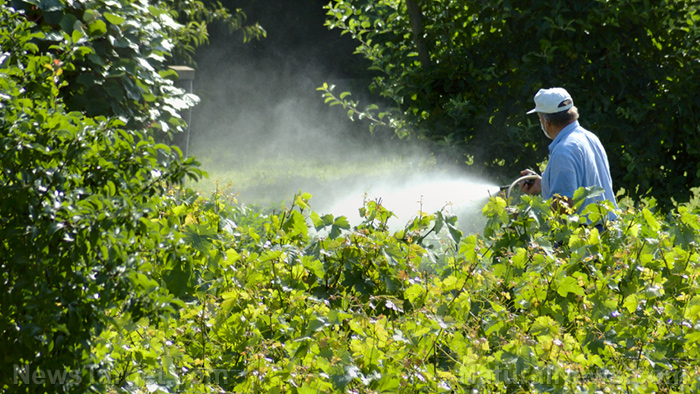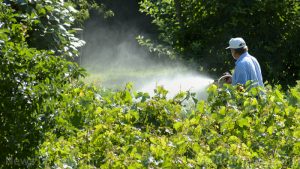
Daminozide — toxicity, side effects, diseases and environmental impacts
Saturday, November 18, 2017 by Rita Winters
http://www.naturalpedia.com/daminozide-toxicity-side-effects-diseases-and-environmental-impacts.html

Daminozide is a white crystalline chemical that is used in regulating plant growth in fruit crops. It was used to control the fruit’s maturity and quality. In November 1989, its use was canceled on food crops by its manufacturer due to its toxicological effects. Daminozide is now registered as for use on ornamental plants and bedding plants. Products using daminozide must contain the word CAUTION.
Other names for daminozide are: (4E)-4-(Dimethylhydrazono)-4-hydroxybutanoic acid; 4-(2,2-Dimethylhydrazino)-4-oxobutanoic acid; Butanedioic acid, mono(2,2-dimethylhydrazide); Dmasa; DMSA; KYLAR; sADH; 1-(2,2-dimethylhydrazide)-butanedioic acid; aminozide; diaminozide; dimethylaminosuccinic acid; Succinic 1,1-dimethyl hydrazide; and others.
When daminozide is metabolized in the human body, it produces unsymmetrical dimethyl hydrazine (UDMH) which is a chemical used in rocket fuels. Both daminozide and UDMH are carcinogenic and are both toxic and fatal.

List of known side effects
This chemical is known to cause irritation in the stomach and the intestines. It also causes convulsions, coma, and liver and kidney damage. Suffocation may occur when inhaled. It may be absorbed through the eyes and skin and cause dermal and ocular irritation.
Body systems affected by daminozide
Daminozide is a known irritant, and is toxic to human liver, kidney, and lungs. It can cause atrophy of the ovaries and the enlargement of the liver bile duct. Dermal and ocular infection and irritation may occur upon contact of the toxic chemical. Daminozide is known to increase the incidence of tumors in animals at high doses. It also has teratogenic effects when specimen are exposed to high doses. It may also affect the gastrointestinal tract and may induce convulsion and coma. When heated or set aflame, it may produce toxic gases like carbon monoxide and carbon dioxide.
Items that may contain daminozide
Daminozide is highly used on apples and peanuts. It is used in cherries, nectarines, peaches, prunes, and pears as well. Other uses include Brussels sprouts in California, cantaloupes in California and Arizona, grapes, and tomatoes.
How to avoid daminozide
Avoid ornamental plants including azaleas, bedding plants, plugs, chrysanthemums, foliage plants, hydrangeas, tree fruits including peaches, cherries, prunes, and pears that are commercially farmed or managed.
When exposed to damonizide, check the victim’s eyes for contact lenses and remove them. Flush eyes with water or normal saline solution for 20 up to 30 minutes. Call ambulatory services in the meantime. For skin contact or irritations, do not apply any ointments, oils, or any other medication. Flush with soap and water. For inhalation cases, immediately leave the area and take deep breaths of fresh air. During cases of ingestion, do not induce vomiting. If the victim is conscious, have him drink one to two glasses of water. The chemical is a known carcinogen, so it is highly suggested to transport the victim to the hospital as soon as possible.
Where to learn more
Summary
Daminozide can cause tumor growth.
Daminozide is toxic to the liver, kidneys, and lungs.
Daminozide is a known irritant.
Daminozide must not be used on food.
Sources include:
Tagged Under: Tags: daminozide





